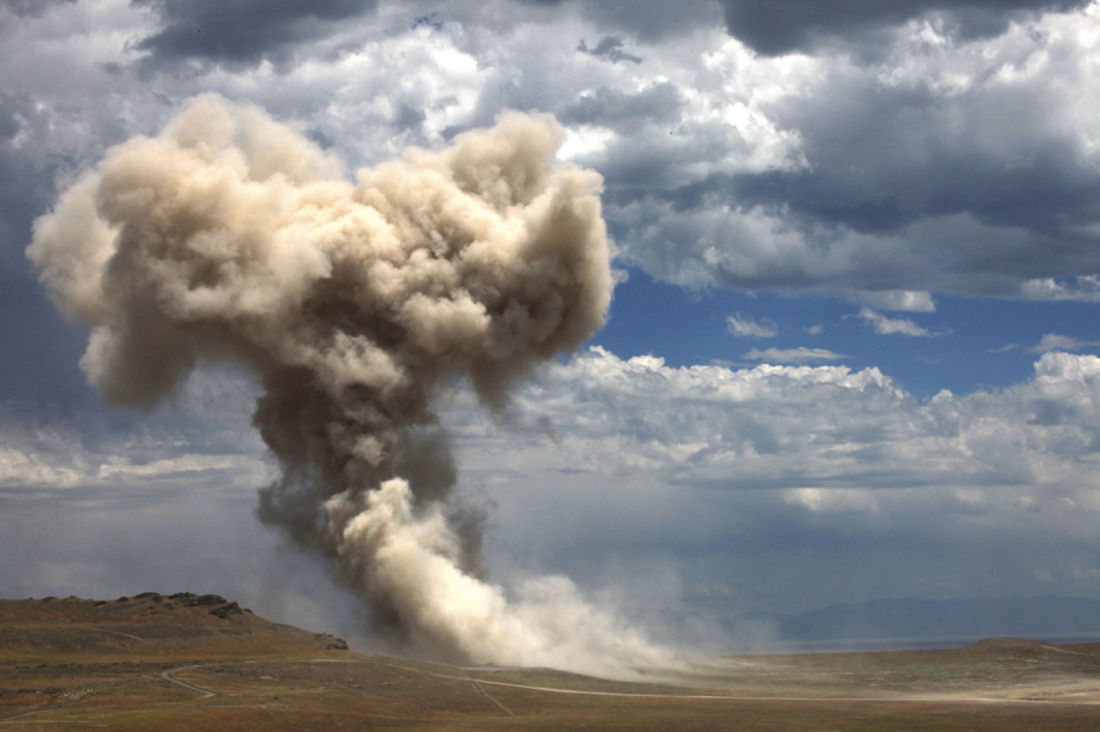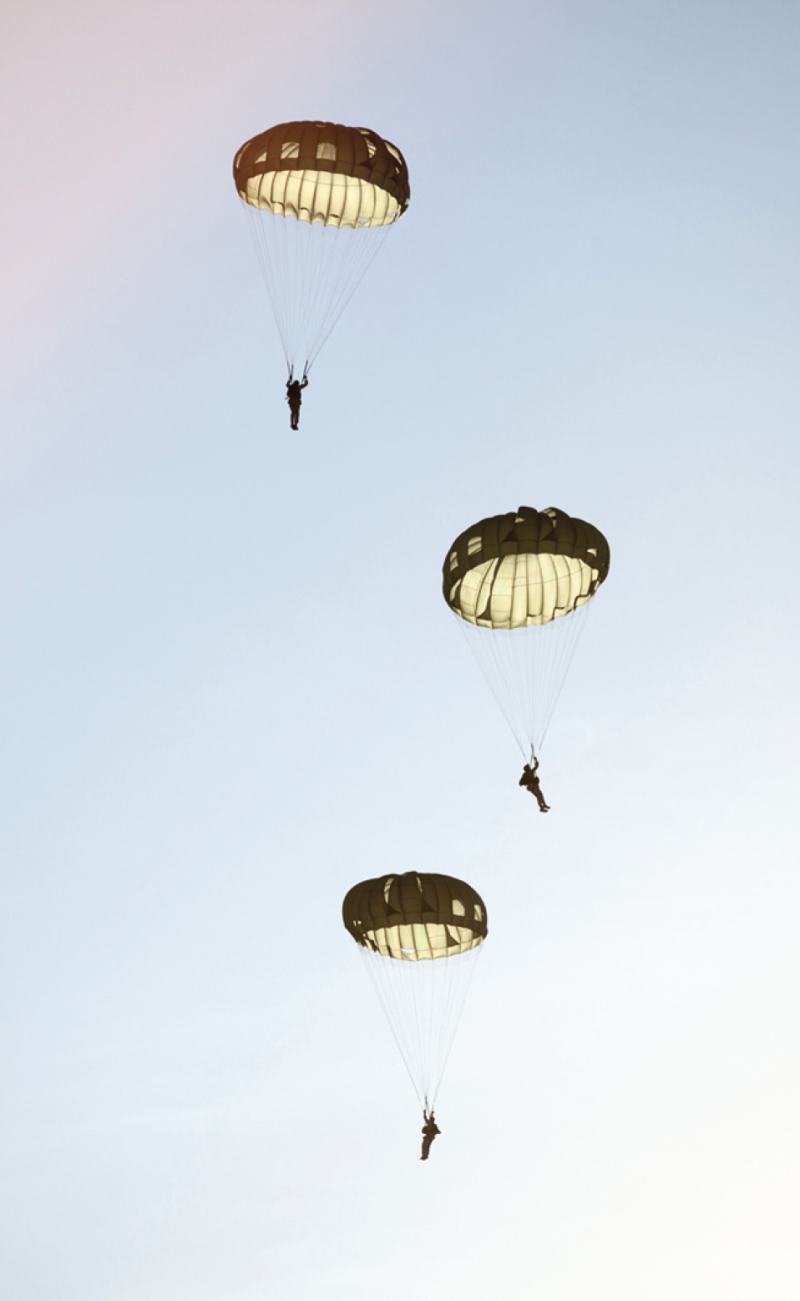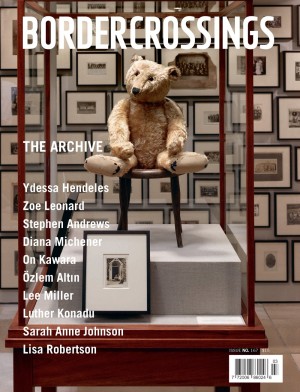Mary Kavanagh
“Atomic Suite,” an exhibition of new work by Mary Kavanagh, raises questions about nuclear representation since Hiroshima and Nagasaki, asking what visual strategies might allow for atomic catastrophe in the past to engage with this threat in the present? Three of the five component parts of the exhibition employ photography, the other two—watercolour and video. The use of three different media is calculated. Kavanagh is concerned not only with what she is representing, but also with how she is representing it. The “how” is pivotal. It “not only organizes the image,” Judith Butler observes, in Frames of War: When Is Life Grievable? (Verso, 2009), “but works to organize our perception and thinking as well.”
Since the Vietnam War and the development of the 24-hour news cycle, photojournalism has lost much of its force. Technological changes in the instruments of war and restricted access to war zones for journalists have made it increasingly difficult to produce war images of the kind made by combat photographer Eddie Adams or photojournalists Nick Ut in Vietnam and Yoshito Matsushige and Yoˉsuke Yamahata in Hiroshima and Nagasaki. Photography has been required to step back. It has retreated from the proximity of unfolding events to a more remote region (sometimes so remote that it has risked losing contact with its referents altogether). Instead of reflex reactions, there has been reflection; instead of spontaneity, the considered stare.

Mary Kavanagh, Thermal Cloud, Minute Man Missile Rocket Motor Detonation, UTTR, 2010. Images courtesy the Art Gallery of Calgary.
Most recent war photography I have encountered can be categorized as aftermath photography. Simon Norfolk calls his large, unpeopled photographs of destruction and ruin, produced in subdued colour and precise resolution, instances of the “military sublime.” “Archaeological Treasures from the Tigris Valley,” a series executed in 2003, represents scattered objects left behind by the Iraqi Army at battlefield sites. Tattered boots, a worn toothbrush and a dented helmet function as material signs of loss reproduced on a monumental scale. In the work of Norfolk and most other photographers of war, what comes after takes the place of what went before. The event is superseded by its trace.
The photographs in a recent book by Mark Klett and William L Fox, The Half-Life of History (Radius Books, 2011), overlap with certain images in “Atomic Suite.” Both Klett and Kavanagh had artist residencies at Wendover Air Force Base, Utah, sponsored by The Center for Land Use Interpretation (CLUI). During their respective sojourns they must have walked the same ground—but they experienced it differently. If what they saw was similar, how they represented it was poles apart.

Mary Kavanagh, U.S. Marines Parachute Training, Wendover Airport, Wendover UT, 2010.
The Half-Life of History begins by underscoring the divide between photojournalism and aftermath photography. The book’s first dozen pages are documentary images from 1945 of the Enola Gay, the B-29 “Superfortress” that dropped the atomic bomb on Hiroshima, of the Wendover training base where pilot Paul Tibbets made practice bombing runs with “Fat Man” dummies and of Hiroshima itself. The images are taken from newspapers, recognizable by the Ben Day dots freckling their surfaces, printed on matte paper to resemble newsprint. These are followed by photographs taken by Klett over the course of a decade at Wendover, Tinian Island (the staging ground for Tibbets’s bombing mission) and the Hiroshima Peace Museum. The latter are printed on glossy paper: a child’s toy soldier half-buried in the salt flats; broken glass in the hangar that housed the Enola Gay; out-of-focus strands of barbed wire; the ruins of torn and abandoned buildings. This is the military sublime with a satin sheen, it seems to me, in which the aestheticization of the trace overwhelms the event to which it refers.
The works in “Atomic Suite” steer away from satin sheen. They also steer away from the fetishized trace. Two of the components of the exhibition are gridded, where the grids act as a corrective to the excesses of the military sublime. A group of 72 colour photographs titled “Restricted Area: Use of Deadly Force Authorized” places past military events within the orbit of present ones (and vice versa). Recent images of thermal clouds produced by the detonation of a Minuteman missile (minus its nuclear core) are juxtaposed with those of the Enola Gay hangar; images of US Marines practising parachute jumps in preparation for deployment to Iraq and Afghanistan are positioned close to photographs of atomic bomb loading pits constructed during World War II. The second gridded work consists of 32 small watercolours. Beneath a representation of the Marines descending by parachute—they are almost invisible in the watercolour, like a premonition of radioactive fallout—is the oval shape of a shock wave. Nearby is a drawing of an anti-radiation suit made for a pig, designed to test the effects of fallout on animals.
The large-scaled video projection, from which the exhibition takes its name, is presented in four movements. It opens with the US Marines floating across a clear blue sky. The video is about people and bombs descending from the firmament, that is, about literal and metaphoric connections between falling and fallout. The final movement represents a butoh dancer performing in a cornfield on the anniversary of the Hiroshima bombing, slowly collapsing his chalked body around a stunted plant. Like the other works in the exhibition, the video takes its distance from the military sublime of Norfolk, Klett and others. By subduing the sublime the works in “Atomic Suite” expose the tenuous links between knowledge and experience, between the atomic past and the atomic present. ❚
“Atomic Suite: An Exhibition by Mary Kavanagh” was exhibited at the Art Gallery of Calgary from April 20 to August 25, 2012.
John O’Brian is a writer and professor of art history at the University of British Columbia, Vancouver.

